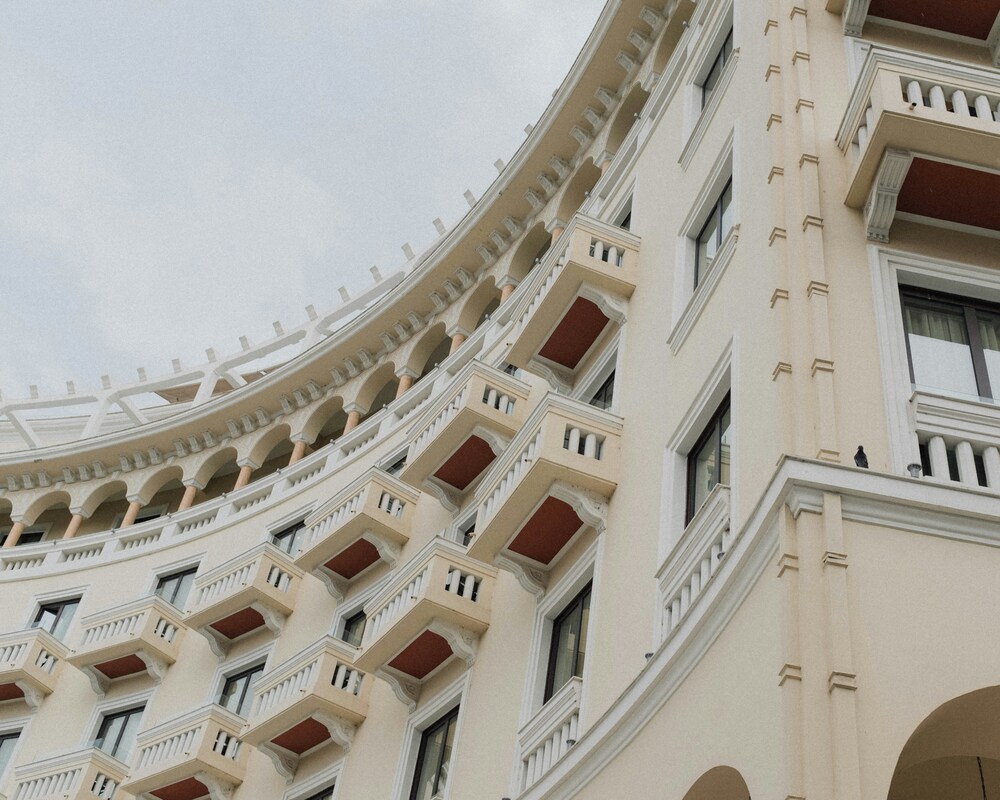- Home
- Articles
- Architectural Portfolio
- Architectral Presentation
- Inspirational Stories
- Architecture News
- Visualization
- BIM Industry
- Facade Design
- Parametric Design
- Career
- Landscape Architecture
- Construction
- Artificial Intelligence
- Sketching
- Design Softwares
- Diagrams
- Writing
- Architectural Tips
- Sustainability
- Courses
- Concept
- Technology
- History & Heritage
- Future of Architecture
- Guides & How-To
- Art & Culture
- Projects
- Interior Design
- Competitions
- Jobs
- Store
- Tools
- More
- Home
- Articles
- Architectural Portfolio
- Architectral Presentation
- Inspirational Stories
- Architecture News
- Visualization
- BIM Industry
- Facade Design
- Parametric Design
- Career
- Landscape Architecture
- Construction
- Artificial Intelligence
- Sketching
- Design Softwares
- Diagrams
- Writing
- Architectural Tips
- Sustainability
- Courses
- Concept
- Technology
- History & Heritage
- Future of Architecture
- Guides & How-To
- Art & Culture
- Projects
- Interior Design
- Competitions
- Jobs
- Store
- Tools
- More
How Is Psychology Used in Hotel Design to Enhance Guest Comfort?

Imagine stepping into a hotel lobby and immediately feeling an embrace of tranquility, as if the space itself understands your need for respite.
It’s like a well-composed symphony, where every element harmonizes to transform a simple stay into a comforting experience. From the deliberate pacing of walking paths to the serene ambiance created by lighting, each detail in hotel design is meticulously orchestrated to ensure your ultimate comfort.

Table of Contents
ToggleThe Foundation of Psychological Design in Hotels
In hospitality design, a fundamental tenet is Environmental Psychology, an intersection of psychology and architecture where space profoundly influences emotions and behaviors. Designers leverage this understanding to craft environments that subtly soothe, energize, or engage guests, depending on the designated function or mood desired.
If such an impactful role in a space’s ambiance is recognized, designers create a “psychological landscape.” This is not merely a matter of interior design but a holistic consideration where acoustics, olfactory elements, and tactile sensations converge to foster well-being.
At its core, the psychology in the hotel design is about curating a sensory journey that guests may not overtly notice but will feel – crafting an intuitive sense of place that resonates on a subconscious level.
Understanding Guest Needs and Expectations
In hospitality, designers intuit the spectrum of guest desires, ranging from solitude to social engagement. They meticulously sculpt spaces that anticipate and fulfill these often unspoken requirements.
Understanding that comfort extends beyond physical amenities, psychological cues within the hotel atmosphere address the need for safety, relaxation, or stimulation. Through these intricate details, guests experience a seamless, instinctive connection to their temporary habitat.
Tailored experiences emerge from observing behaviors and anticipating emotional states. Design elements like lighting, texture, and sound are manipulated to create an ambiance that resonates with guests visually, allowing them to navigate spaces intuitively and easily.
The Role of First Impressions
In the hospitality sector, the initial encounter with the hotel environment sets the stage for the guest’s entire stay.
Architecturally speaking, a grand entrance or a cozy nook can serve as a welcoming embrace, anchoring a positive and comforting psychological foundation from the onset. The ambiance is meticulously crafted here, spotlighting the importance of first impressions.
Lobbies thus act as ceremonial spaces where architecture and interior design converge. Here, elements like proportion, materiality (particularly involving texture and color), and lighting harmoniously orchestrate the guests’ introduction to the hotel’s character.
These carefully designed thresholds aim to establish an immediate connection between the guests and the hotel, enveloping them in an atmosphere of familiarity and comfort as if the space speaks directly to their psyche.
Visual coherence is paramount, ensuring every detail aligns with the hotel’s identity and ethos. This includes the well-orchestrated symphony of form, function, and aesthetics, communicating a narrative that guests start to absorb the moment they cross the threshold.
Psychological Principles Applied in Hotel Design
Sensory design elements are meticulously woven into the fabric of hotel interiors, leveraging colors, textures, and spatial flow to evoke tranquility and comfort. When thoughtfully orchestrated, such elements tap into cognitive responses to shape guests’ emotional states.
Ambient complexities, such as acoustic design and olfactory cues, subliminally enhance the guest experience, triggering positive associations and a sense of well-being. These subtleties in design translate to a serene ambiance that guests may not consciously notice but will invariably feel.
Color Psychology
Color plays a pivotal role in hotel interiors. It is carefully chosen to elicit emotional responses that ensure maximum comfort. Color tones influence mood, fostering a tranquil or stimulating atmosphere.
Soothing hues like blues and greens are known to evoke calmness and restfulness. These colors manifest serenity in bedrooms, promoting restorative sleep amidst the hustle of travel.
Vibrant accents can energize spaces like lobbies or restaurants, inviting engagement (think bold reds or energetic yellows) and sociability. Harmonious color arrangements enhance the overall aesthetic appeal, subtly shaping guest perceptions.
Designers leverage these color psychology principles to instigate emotional responses. They craft a narrative through hues, establishing zones of activity and rest, ensuring guests feel intuitively at ease throughout their stay.
Careful attention to color temperature matters – warm colors can make large, open spaces feel cozier, while cooler tones may expand smaller areas visually. Ensuring that the quality and intensity of colors align with the intended psychological impact is paramount.
The Psychology of Space
Spatial configuration profoundly influences guest perceptions, affecting comfort, behavior, and overall experience within a hotel environment. The thoughtful arrangement creates a seamless flow, guiding visitors intuitively from space to space.
The ambiance is sculpted through architectural cues and spatial allocation. Strategic design speaks to the subconscious, fostering a sense of belonging and ease.
The interplay between private and public realms is carefully orchestrated to support various states of being, from the desire for social interaction to the need for solitary contemplation. The layout of a hotel must accommodate the fluid nature of human social dynamics.
A well-designed hotel navigates the balance between spaciousness and intimacy, employing architectural strategies to evoke feelings of expansiveness or coziness where appropriate. This psychological shaping of space extends beyond the purely functional; it aims to resonate with guests’ emotional frequencies, transforming the hotel into a sanctuary.
Lighting and Its Emotional Impacts
The nuanced manipulation of lighting channels deep-seated emotional responses, elevating mere ambiance into a compelling narrative of comfort and well-being. This illumination strategy becomes an innate dialogue with the guest’s psyche.
Adequate natural light evokes freshness, vitality, and an open-hearted welcome. It is daylight that most deeply resonates with our circadian rhythms.
Artificial light, finely tuned to imitate the warmth or coolness of natural light, serves to harmonize a guest’s experience with the intended mood of a room – be it a tranquil spa retreat or a lively lobby. The elegance of standing lamps, the soft glow from sconces, and the precision of accent lights all combine to shape the guest’s emotional milieu.
Designers wield color temperature and intensity with deft expertise, understanding that the mere flicker of a flame or the brilliance of a well-placed spotlight can alter perceptions and influence behavior.

Creating a Sense of Place and Belonging
In hospitality design, architects and interior designers often imbue spaces with a unique identity, fostering a connection that reverberates with the guest’s subconscious. Materiality, iconography, and local art are deftly harmonized to echo the cultural and geographical narrative of the hotel’s locale.
Crafting this narrative journey extends beyond visual aesthetics to tactile, auditory, and olfactory stimuli. Textured fabrics, soothing sounds, and even signature scents culminate in a multisensory symphony, creating immediate comfort and familiarity.
In this context, accommodations that offer amenities aligning with personal lifestyles, such as hotels with kitchenette in Phoenix, serve as a good example. These amenities provide practical value and deepen the sense of belonging by allowing guests to partake in their daily routines.
Incorporating Local Culture and Art
Integrating local culture and art into the hospitality experience enriches a hotel’s ambiance and deepens the guests’ connection with their travel destination.
Here’s how incorporating local elements can transform a hotel’s environment:
- Embracing Local Culture Elevates Hotel Ambiance
- Instills a distinctive sense of place by weaving the destination’s story into guests’ experiences.
- Enhances guests’ connection to the locale through immersion in local culture.
- Incorporation of Artisans and Local Motifs
- Acts as a narrative thread linking guests to the region’s heritage.
- Curated artwork and craftwork offer a cultural journey, creating enriched memories.
- Transcending Mere Decoration
- Cultural elements engage guests on a profound level, facilitating a dialogue between visitors and the vernacular.
- Anchored in the authentic visual language of the region, promoting deep engagement.
- Creating a Gallery-Esque Milieu
- Highlights local craftsmanship in every corridor and guest room, transforming spaces into educative experiences.
- Transforms passive observation into an educative exchange, nurturing appreciation for the locale.
- Integration of Indigenous Artistry
- Represents respect and recognition of local culture.
- Fosters deeper understanding and a lasting bond between traveler and destination.
Personalized Experiences
In hospitality, anticipation of guest needs is paramount. Hotel design is carefully crafted to create an environment that feels individually tailored and intimately personal.
Since mood and well-being are intrinsically connected, spaces are designed with psychological subtlety, easing guests into relaxation while fostering feelings of importance and care. Ambient lighting, soundscapes, and olfactory elements are meticulously orchestrated to evoke a serene and comforting atmosphere.
Guest personalization extends to aesthetic choices. Design elements are adaptable to cater to an array of preferences, enabling environments that reflect guests’ unique tastes and personalities.
Technology in Psychological Hotel Design
Technology can discreetly monitor and adjust environmental controls to anticipate guest needs, fostering a seamless experience. Utilizing smart thermostats and automated lighting systems, comfort levels are continuously optimized without intrusion.
Sophisticated data algorithms allow hotels to analyze preferences and behaviors. Automated Customer Relationship Management (CRM) systems enable the curation of bespoke experiences, heightening the sense of individual attentiveness.
Biophilic design, amplified by technological integration, connects guests with natural elements electronically. Smart glass windows that manage light and landscape views and virtual reality gardens cultivate an innate sense of well-being and tranquility in the digital age.
Enhancing Convenience and Comfort Through Tech
Technological advancements are pivotal in customizing the hotel environment to guest preferences, fostering unparalleled comfort and convenience.
Here’s a closer look at how modern technology enhances the guest experience:
- Automated Check-In/Out Processes: Streamlines the arrival and departure, reducing wait times and stress.
- Personalized Room Control: Guests can adjust lighting, temperature, and entertainment through digital interfaces for a tailor-made stay.
- Mobile Key Technology: Enhances security and convenience by allowing guests to access rooms with smartphones.
- High-Speed Wireless Internet: A staple for connectivity, catering to the leisure and business traveler alike.
- In-Room Tablets: Offer control over hotel services and pertinent information, from room service to local attractions.
Conclusion
From the subtleties of lighting and texture to the personalized control over one’s environment, these elements coalesce into a sanctuary of relaxation amid the bustle of travel — spaces that speak not just to the eyes but to the soul.
Hoteliers, armed with an understanding of the psychological underpinnings of comfort, craft venues that don’t merely offer a place to rest but a canvas for rejuvenation. Sophisticated use of technology augments these efforts, melding the tangible with the intangible to generate harmony and well-being — an offer of solace in a world that never stops moving.
illustrarch is your daily dose of architecture. Leading community designed for all lovers of illustration and #drawing.
Submit your architectural projects
Follow these steps for submission your project. Submission FormLatest Posts
Top 8 Luxury Vacation Rentals Features Guests Love Most
A luxury vacation rental offers an entirely different experience than a typical...
Why Local Expertise Matters: Choosing the Right Plumbers in Townsville
Why Local Expertise Matters: Choosing the Right Plumbers in Townsville When it...
Bathroom Remodel ROI: How to Add $15–30K to Your Home Value in 2025-2026
Outdated bathrooms can drag a listing 20-30% longer on the market. Buyers...
The Key Factors to Review When Comparing Fiber Providers in Minneapolis
Looking for a fiber provider in Minneapolis can feel surprisingly overwhelming. The...












Leave a comment